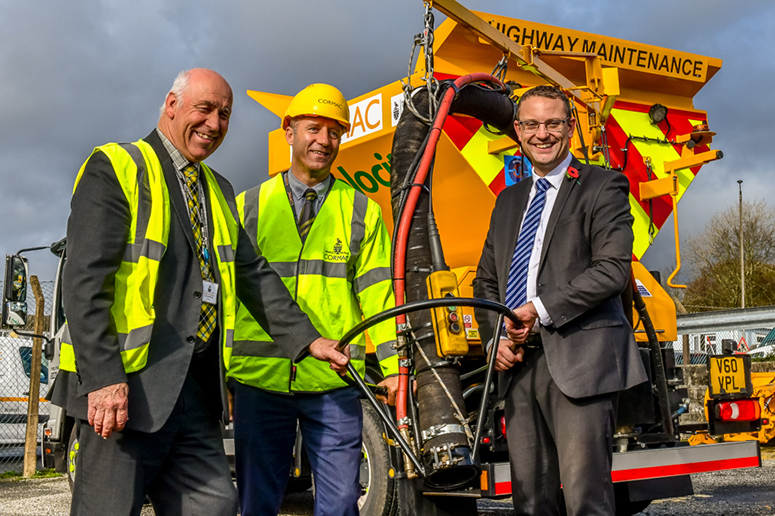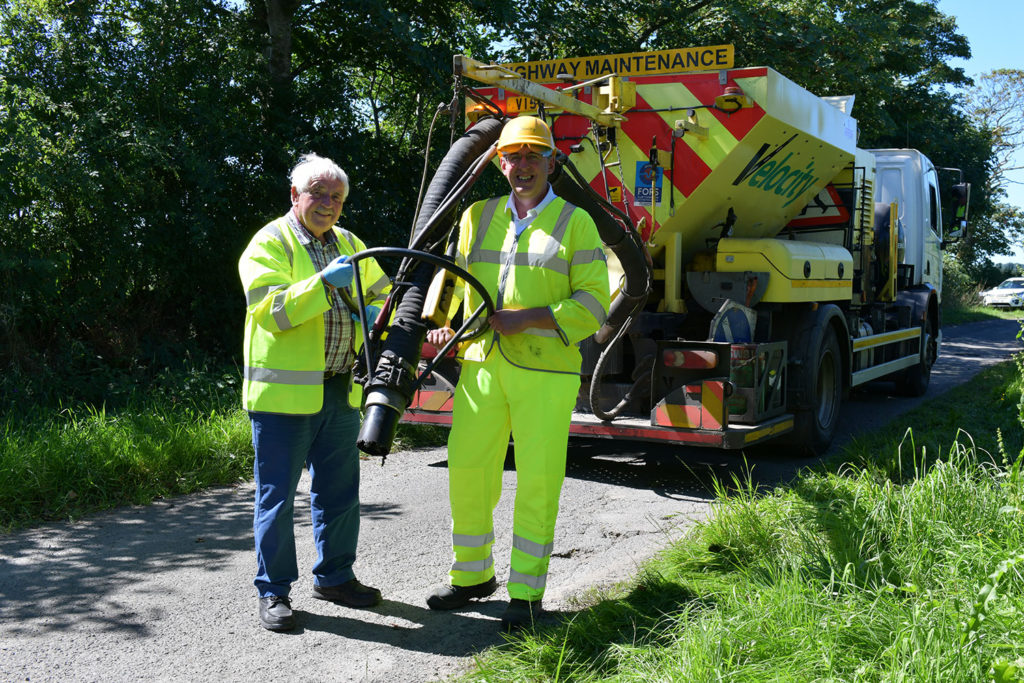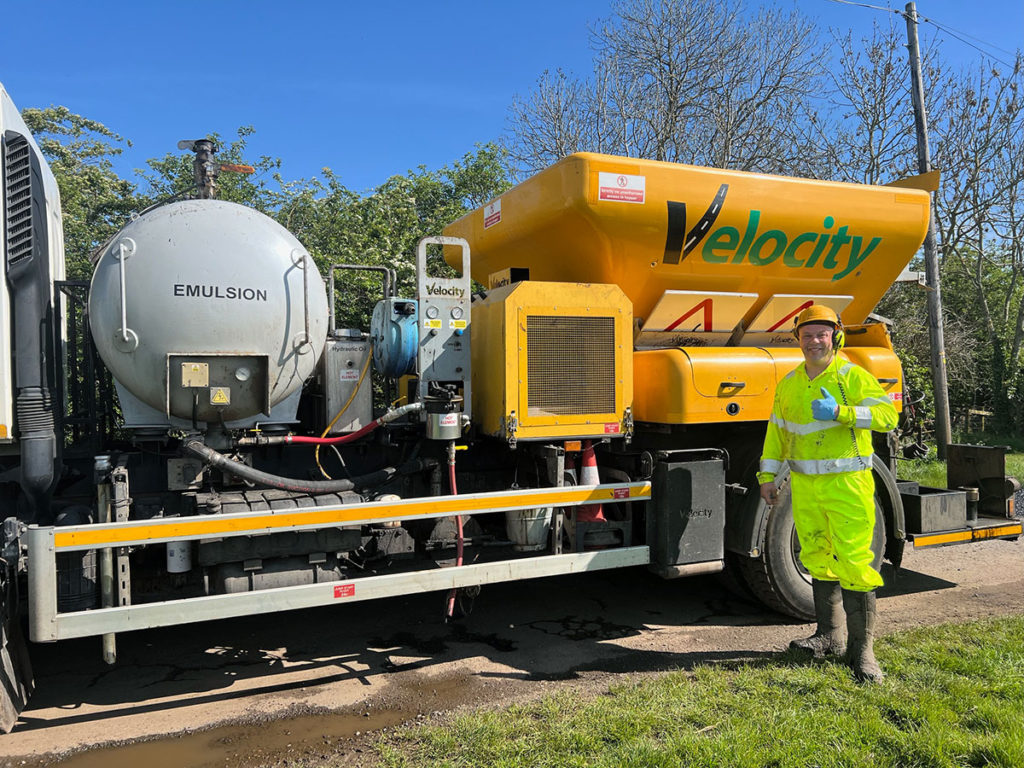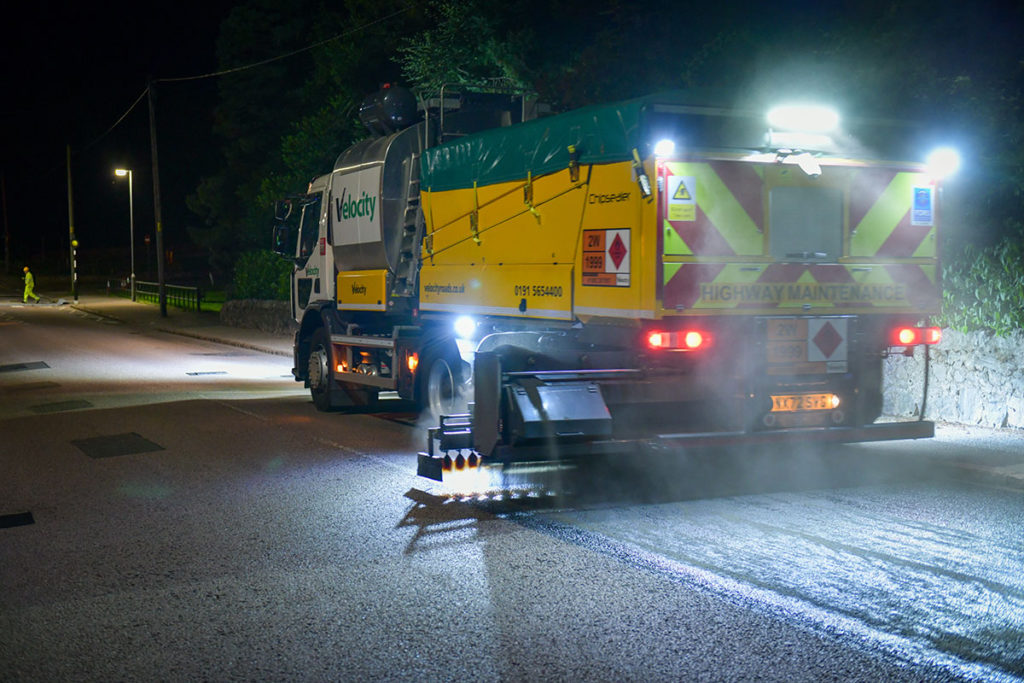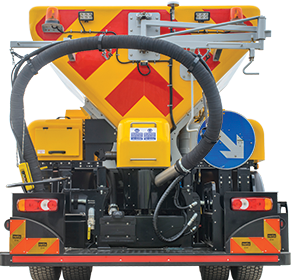Road repair specialists Velocity have introduced a new machine to their fleet that allows their innovative process to be used on the most constricted parts of the road network.
The machines have been developed in collaboration with Velocity’s customer, Cormac, based on experience of using the process over the past four years working together in Cornwall. Cormac needed a solution to tackle preventative and reactive maintenance on the most difficult parts to reach of their network.
Designed and manufactured by Velocity in Sunderland, the machines have been built on the smallest possible chassis. The short wheelbase and width of the vehicles allows for access to tight, single-track lanes found in rural areas as well as making working in busy urban areas such as the capital easier.
Councillor Geoff Brown, Portfolio Holder for Transport, said the new Velocity machine is of great benefit to Cornwall. With some 51k potholes being repaired last year using Velocity Patching, this new machine which can tackle 200 potholes a day will be invaluable in helping Cormac to exceed its target to respond to all pothole reports promptly.
Steve Bayley, Network Manager for Cormac said: “This will significantly improve productivity so that our highways teams can cover more than double their daily target repairs.
“It also allows relatively large areas of carriageway to be treated quickly, meaning teams can also pull in lower priority repairs in the process, and thereby slowing down the rate at which our roads deteriorate and reducing the need for future re-visits to the same locations.
It’s about time we started looking at innovative ways of starting to deal with this issue.
This investment is going to deal with this problem, and that’s a major positive.”
Unique to Velocity, the new model expands the capabilities of the fleet of machines that are deployed with local authorities throughout the UK.
Dominic Gardner, Velocity’s managing director said: “We are very happy to be able to make this significant investment in our fleet for the benefit of Cornwall. In collaboration with Cormac, we have applied the knowledge we have gained together over the past four years working in the county.
“These unique machines are easier to operate and carry more material, meaning we will be able to deliver even more repairs per day.
“Customers are already expressing an interest in the new model, seeing the opportunities it opens for them on their networks.”
The investment in equipment follows on from continued investment in standards for the company, with Velocity migrating to the new standard for health and safety, ISO 45001, and contributing to the development of a British Standard for Spray Injection Patching, BS 10947:2019.
The standard has been developed to give people a greater understanding of the use of spray injection patching, including the expected service life and suitability of the technique for repairs in different locations.
Proposed by the Road Surface Treatment Association (RSTA), the initiative to develop a standard specifically for the technique was driven by the revision of the BS 434 Bitumen road emulsion standard, under which the technique was previously covered.
Working in accordance with the standard gives certainty to customers, with all suppliers delivering work in conformance with criteria defined in a Type Approval Installation Trial (TAIT).
Dominic Gardner, Velocity’s managing director is a member of the British Standards Institution committee and contributed to writing the standard, joining a panel of experts from Colas, Highways England and Atkins: “The development of a British Standard specifically for spray injection patching will give customers increased confidence and understanding of the product.
“For local authorities, the standard should make procurement easier and give clear expectations of how the product should perform and an indication of the expected life-span of repairs backed-up by a guarantee period.
“Increasingly, we use spray-injection patching to carry out repairs to potholes and other defects in advance of surface dressing works. This standard also gives confidence to surface dressing contractors that areas treated with spray-injection patching are suitable for laying new material on top.”
The standard will be reviewed annually by the committee, and is available on the BSI website at the following address:
https://standardsdevelopment.bsigroup.com/projects/2018-01829

